Your Guide to Asian Sauces
Have you ever attempted to try some Asian sauces but don’t know what to do with them? In this guide, you’ll learn 14 Asian sauces in great detail along with tips on how to use them in your cooking.
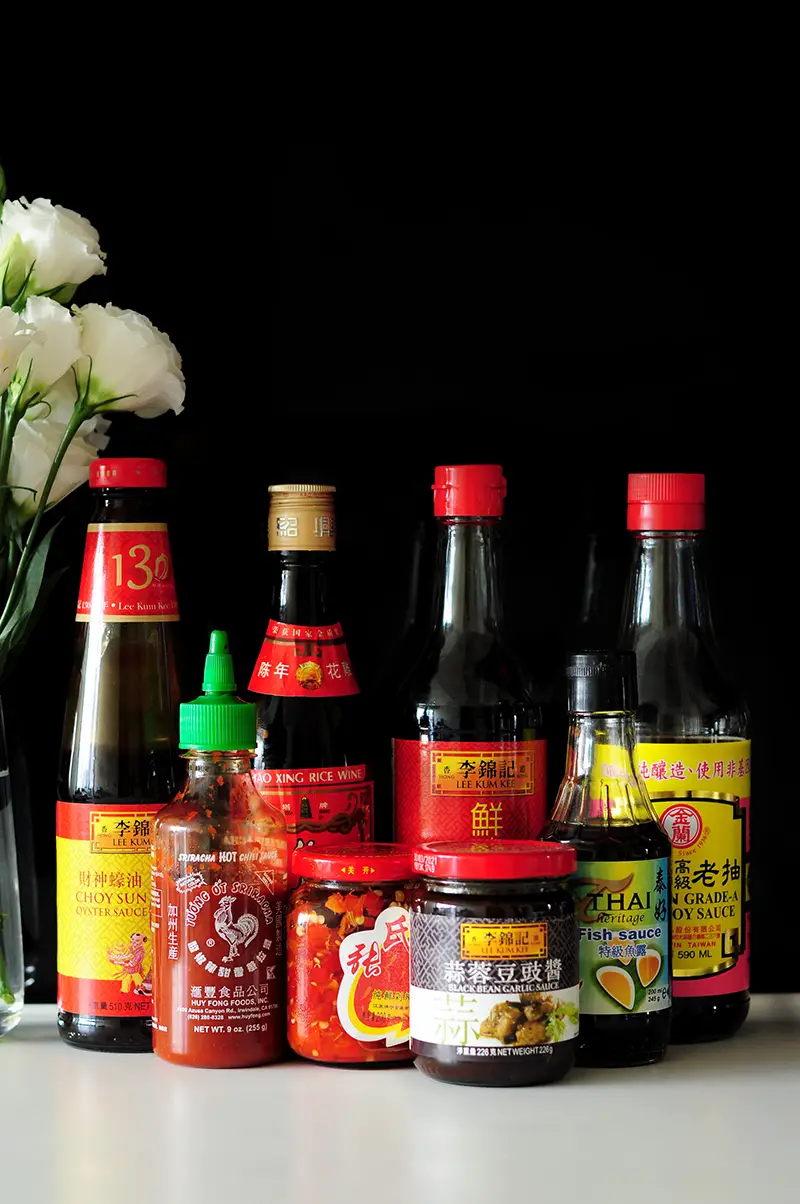
When you walk down the oriental aisle of your local grocery store, you’ve probably seen a bunch of mysterious-looking jars and bottles labeled with Asian symbols. Do you dare pick one up and give it a try? In my humble opinion, if you don’t, you’re missing out on some of the most flavorful meals you’ll ever make. Here are 14 Asian sauces you’ll want to keep on hand when it comes to boosting the tangy, spicy, savory, or umami flavor of your recipes.
1. OYSTER SAUCE
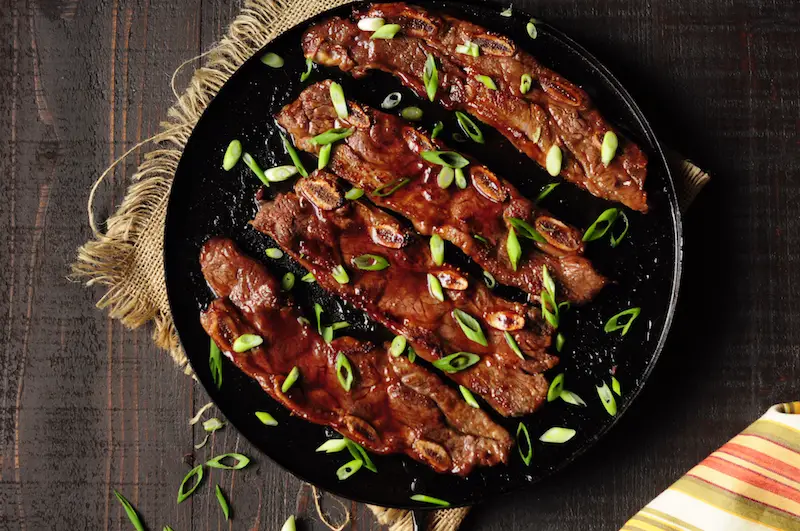
What is it?
Oyster sauce is a thick, rich, dark-colored, syrupy sauce made from (no shocker here) oysters—oyster juice, to be specific.
To make oyster sauce, you use a base of oyster juice (which is what’s left over from boiling and simmering oysters in a pot for an extended period of time) and combine it with salt, sugar, and soy sauce to enhance the umami flavor. Oyster sauce is less salty than soy sauce. My go-to brand of oyster sauce is Lee Kum Kee.
Why cook with it?
Oyster sauce is almost always used in Asian stir-fries, and it lends a delicious savory flavor to vegetables, noodle dishes, and marinades without tasting too much like seafood or being too overpowering when it comes to the salt. Since oyster sauce already has a thick texture, you don’t need to mix it with anything else before adding it to your recipes.
How to use it:
It’s best to finish your recipes with oyster sauce because if you add it too early, it will burn. So, when you’re making a stir-fry, you’ll want to saute your veggies in oil for a few minutes until fork tender and add the oyster sauce last. It’s a great way to jazz up the flavor of an otherwise plain dish of wilted greens, asparagus, or green beans.
Recommended recipes with oyster sauce:
Stovetop 3-Ingredient Asian Ribs
Rainbow Chicken Salad
Red Wine Beef Broccoli with Mushroom
Thai Sautéed Chicken with Basil Leaves
Thai Fried Squid with Basil Leaves
Bacon and Eggs Fried Rice
2. SOY SAUCE
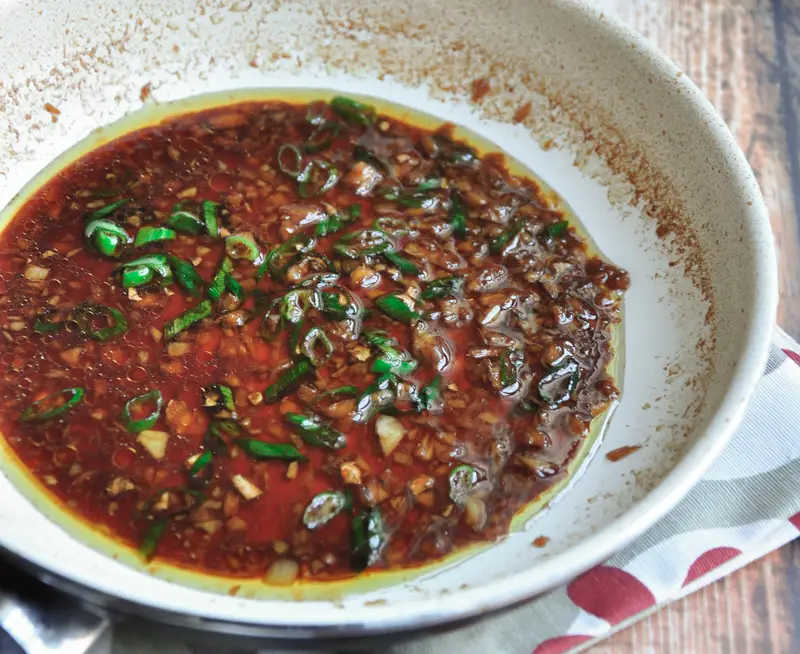
What is it?
Soy sauce may just be one of the most ancient condiments, with records of its use dating back to 300 CE!
Although soy sauce may seem pretty simple due to its short ingredient list (soybeans, wheat, and a yeast culture), there’s a lot of time and love that goes into making it. First, the soybeans get soaked and steamed then mixed with wheat flour and a yeast culture to ferment for up to two years.
There are two different types of soy sauce you may have seen before, and they vary in flavor, texture, and color. There are Japanese varieties of soy sauce, which have specific names such as tamari, shoyu, and usukuchi, while Chinese soy sauce is simply classified as light or dark soy sauce (which I’ll explain in further detail in a moment). The type of soy sauce you’re most likely to find at your neighborhood Chinese joint is light soy sauce.
One thing to note is that Kikkoman also makes low-sodium soy sauce (it has a bright green lid), which has about 37% less sodium than their regular version.
If you’re following a gluten-free diet, Chinese soy sauces won’t work for you, but you can find wheat-free tamari in the oriental section of your local grocery store.
Why cook with it?
Soy sauce is one of the easiest ways to add umami flavor to any dish. Due to its rich, salty flavor, a few teaspoons can go a long way.
How to use it:
Not just limited to Asian-infused dishes (although it does fare well with Chinese dumplings and sweet and sour pork stir fries), soy sauce enjoys a wide range of uses:
- In your sauce recipes. Mix it with a dipping sauce or salad dressing, like I did in this Roasted Cauliflower with Soy Ginger Sauce made with fresh ginger.
- To bring out the flavor in peanut sauces, like this recipe for Shanghai Cold Noodles With Peanut Butter Sauce.
- To cook your stir-fry vegetables.
- To enhance the flavor of a slow cooker dish, such as this Slow Cooker Curry Chicken.
- As a marinade for meat dishes like Pork Ribs.
Don’t be afraid to get creative and add it to any recipe that could benefit from a hint of a saltier flavor.
3. DARK SOY SAUCE
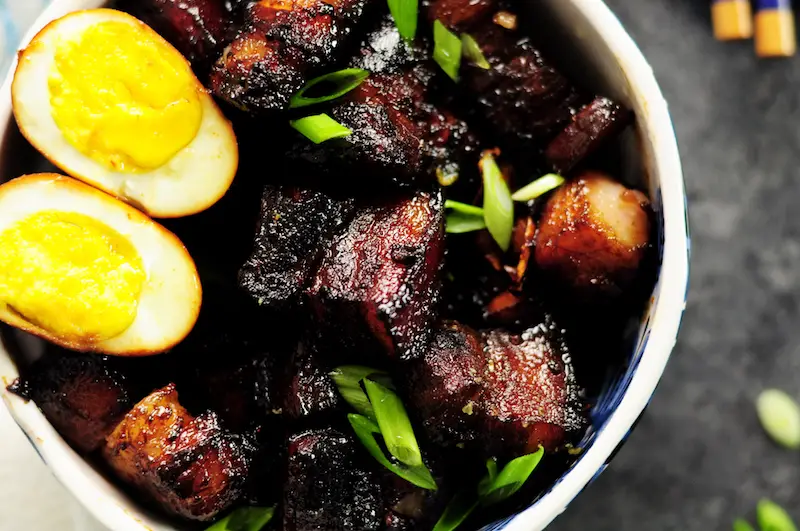
What is it?
Dark soy sauce is made the exact same way as light soy sauce, but it’s fermented for a longer period of time to achieve a richer, more full-bodied flavor. It’s also thickened with cornstarch and sweetened with caramel or molasses.
Why cook with it?
Dark soy sauce offers a deeper color and more complex flavor to recipes. It’s also less salty than light soy sauce.
How to use it:
The recipes that call for dark soy sauce are typically marinades and sauces. However, to bring out its full flavor, dark soy sauce needs to be heated.
Recommended recipes with dark soy sauce:
Shanghai Style Braised Pork Belly
Cumin Lamb Stir Fry
4. PONZU SAUCE
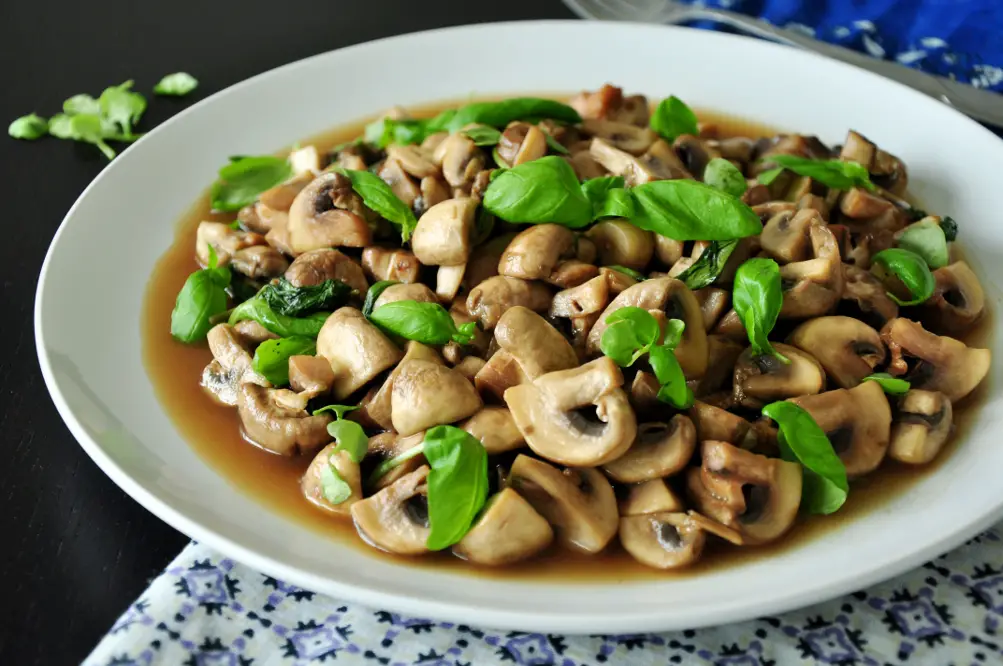
What is it?
A sauce that’s tangy, sour, sweet, bitter, and salty all at once, ponzu is made with a blend of popular Asian ingredients including rice vinegar, rice wine, soy sauce, seaweed, and bonito flakes (dried and fermented tuna). It’s finished with some type of citrus, such as lemon, lime, or bitter orange. Sometimes ponzu sauce is finished with yuzu (a citrus fruit native to Asia), but this variety tends to be pretty pricey and is not found in your average grocery store.
Some people describe ponzu sauce as a more intense, sweeter version of soy sauce, but with no lack of umami flavor.
The ponzu sauce at your local grocery store may also list soy sauce on the label. Traditionally, ponzu sauce isn’t made with soy sauce, but adding it helps keep the ponzu shelf stable.
Why cook with it?
Ponzu adds a punch of flavor to marinades and salad dressings, and it can be used on its own as a dip for thinly sliced meats or seafood, such as tuna tataki or ceviche.
How to use it:
You can think of ponzu almost like a delicate cooking oil because it’s not typically used to cook with at high temperatures. Instead, it’s best used for finishing dishes, such as stir-fries, soups, and stews. It’s fun to get creative with ponzu; it adds some excitement to those otherwise plain Jane dishes. For example, I used it to make these heavenly Basil Mushrooms with Ponzu that I served up with scrambled eggs and Vegetarian Tacos.
5. THAI ROASTED RED CHILI PASTE

What is it?
Thai roasted chili paste is a blend of all kinds of goodness, such as red chilies and Asian spices like tamarind. Some chili sauces will also add fish or soy sauce, shrimp, garlic, peanut, lime juice, and/or sugar to enhance the flavors. If you’re keen on making your own Asian sauces, this is a pretty simple one to blend together at home.
Why cook with it?
Red chili paste adds a pinch of heat and fresh flavor to Asian-inspired dishes, but you can use it for pretty much any type of cuisine that calls for spice.
How to use it:
Meat dish marinades, homemade meatballs, burger patties, noodle dishes, soup bases, stir fries, mayo- or sour cream-based dips… Thai roasted red chili paste is like the “little black dress” of Asian sauces because it pairs well with nearly everything.
Spicy Seafood Combo
Rainbow Chicken Salad
6. FISH SAUCE

What is it?
Fish sauce is made by fermenting what you would literally call “fish juice” for up to two years. I’d be lying if I said it was a sauce known for having a pleasant aroma, but it does an amazing job at adding the perfect umami flavor to the Asian classics such as pad thai, curries, and soups. It’s also a key ingredient in most Asian dipping sauces.
If you were to compare fish sauce to oyster sauce, fish sauce is lighter in taste, less thick, and slightly saltier. Since it has a pretty distinctive taste, there is no direct substitute for fish sauce. However, if you’re vegan, soy sauce would be the closest thing (although the taste is still quite different).
Why cook with it?
Fish sauce adds depth, saltiness, and savory flavor to dishes—without making your recipes taste or smell like seafood.
How to use it:
You can use fish sauce in most recipes that call for table salt and add it to any dish that requires umami flavor, such as rice and noodle dishes, gravies (yes, my Canadian friends… even for poutine!), meat marinades, soups, and consommés. Any recipe that calls for a chicken stock could also use a little bit of fish sauce.
Be warned: Fish sauce has a very strong, pungent taste, so use it sparingly.
Recommended recipes with fish sauce:
Thai Sautéed Chicken with Basil Leaves
Thai Fried Squid with Basil Leaves
Simple Pad Thai
7. COCONUT AMINOS
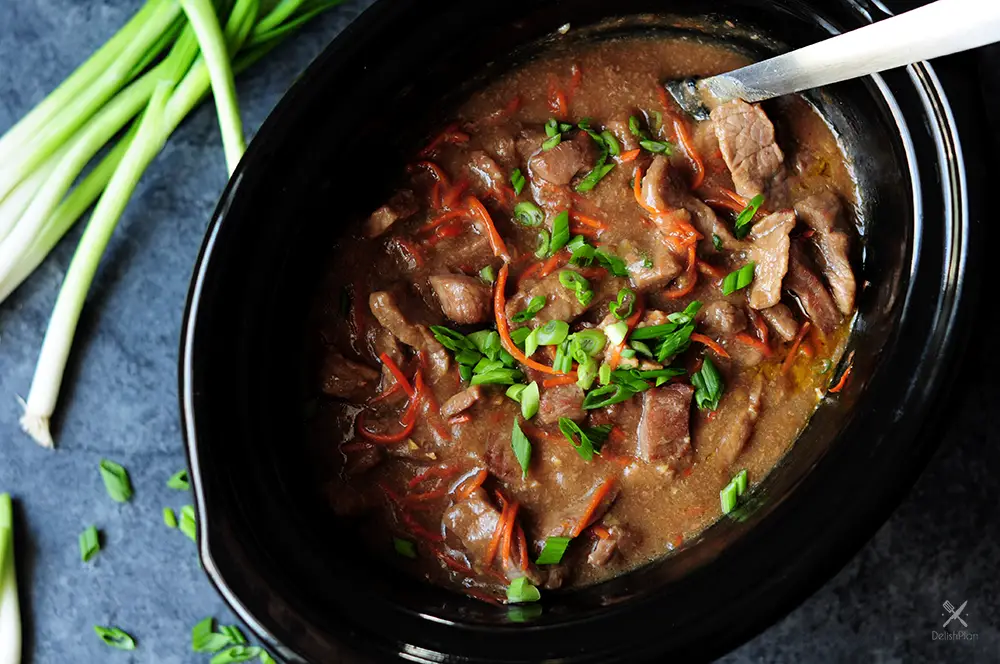
What is it?
Coconut aminos are made from the sap of coconut blossoms. If you were to compare the flavor of coconut aminos to another Asian sauce, it would be closest to soy sauce or tamari, but it’s slightly sweeter, a little saltier, thinner in texture, and darker in color.
Nutritionally speaking, coconut aminos contain 65% less sodium than soy sauce and are richer in minerals and amino acids. They contain no msg, soy, wheat, or gluten.
Being the “next best thing” to soy sauce (although I personally think it’s a pretty great-tasting equivalent), coconut aminos are becoming an increasingly popular condiment for those who follow the Paleo diet or are sensitive to wheat, soy, and/or gluten.
Why cook with it?
Coconut aminos are an easy way to pack a ton of flavor into vegetable dishes and recipes while keeping the sodium content relatively low.
How to use it:
Coconut aminos can be used in any recipe that calls for soy sauce or umami flavor. You could use them as a dipping sauce for sushi, or add them to salad dressings, curries, lettuce wraps, and meat marinades, like chicken wings or kebabs.
Recommended recipes with coconut aminos:
Slow Cooker Curry Chicken
Thai Vegetable Salad
Gluten-Free Slow Cooker Mongolian Beef
Easy Fried Cauliflower Rice
8. HOISIN SAUCE
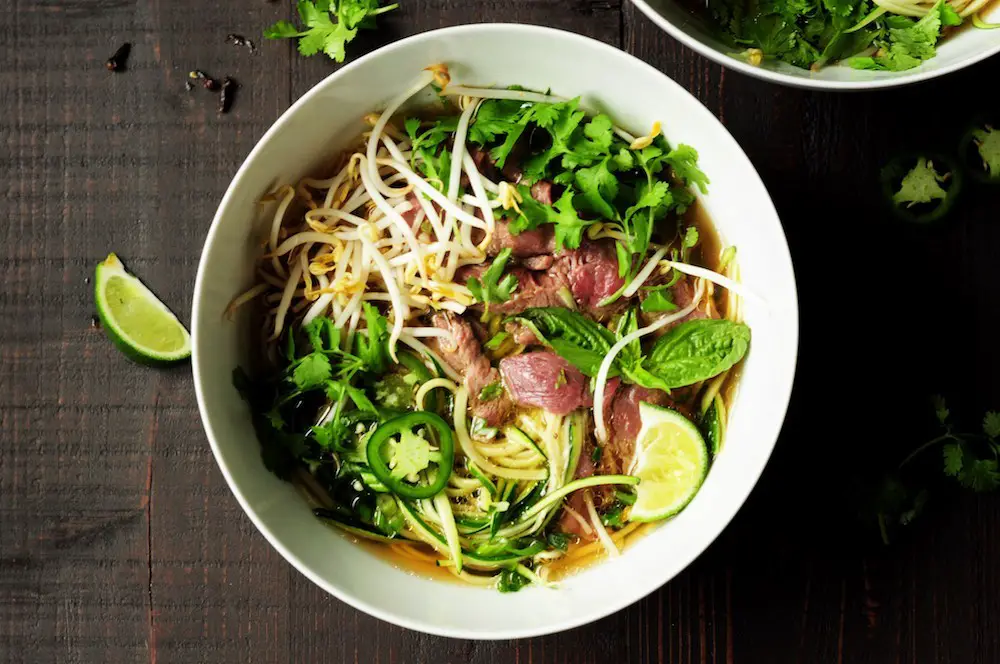
What is it?
A slightly sweet, slightly salty, thick reddish-brown sauce. You could almost say it’s like the Asian version of ketchup or BBQ sauce. Hoisin sauce is made with fermented soybeans, sugar, garlic, and vinegar. In some cases, red chilis are also added.
Why cook with it?
It offers a fragrant and slightly salty taste to recipes.
How to use it:
When it comes to Asian cuisine, hoisin is commonly used in Vietnamese and Chinese cooking as a glaze for meat dishes, a dipping sauce for Chinese dumplings, stir-fries, and spare ribs, and it is added to vinaigrettes. It is the perfect base for any type of full-bodied sauce or marinade.
If you’re new to using hoisin sauce in your recipes, these two are must-tries:
Asian Noodles in Hoisin Sauce
Stovetop 3-Ingredient Asian Ribs
How to Make Pho
15-Min Turkey Pho
9. SAMBAL OELEK
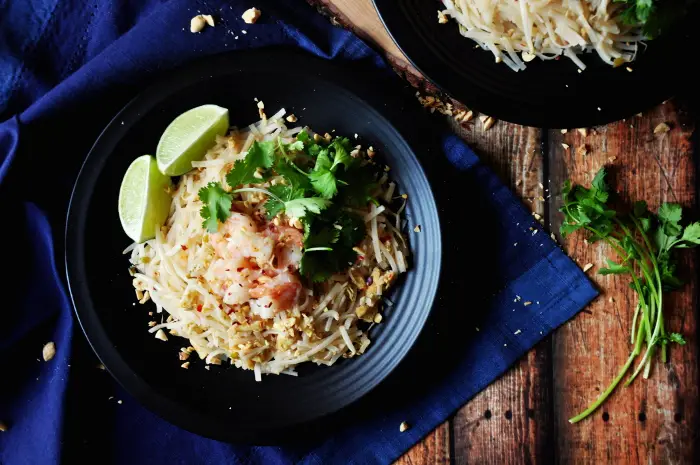
What is it?
Sambal oelek is a fiery Indonesian sauce made from a variety of hot chili peppers, combined with fish sauce, shallot, garlic, ginger, lime juice, rice vinegar, and a slight amount of sugar.
Why cook with it?
Sambal adds a spicy, tangy punch to any recipe that calls for some serious heat. Think spicy chicken wings, pho, creamy dips, stir fries… even a condiment on burgers. Mexican night at your place? Be sure to use sambal in your spicy margaritas!
How to use it:
Sambal is served very much the same way a hot sauce is served in Western cuisine, as a spicy condiment for grilled fish, chicken, soups, and raw vegetables. Sambal can be served raw, or you can add it during cooking.
Try this Simple Pad Thai recipe with sambal oelek.
10. HOT CHILI OIL
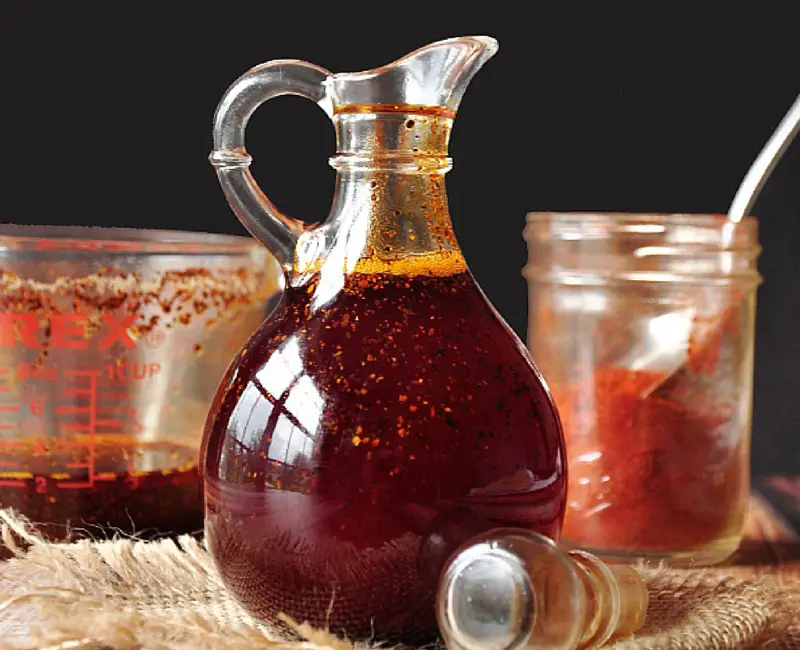
What is it?
Dried hot chili pepper, chili flakes, or chili powder preserved in oil. Sometimes other spices, such as star anise, garlic, or paprika are added to the chilis and oil for additional flavor. Since most store-bought hot chili oil is preserved in refined vegetable oil, it’s ideal to make your own at home with a higher quality oil, such as Kasandrinos Extra Virgin Olive Oil.
Why cook with it?
Hot chili oil is a smoky alternative to your standard hot sauce. It does a good job of turning up the heat on any savory recipe.
Now, I will say, this sauce packs a lot of heat, so use it sparingly unless you like it really, really hot! Chili oil was the secret ingredient I pretty much grew up with, so I use it any chance I get.
How to use it:
There are endless ways to use hot chili oil. For starters, you can cook with it for dishes that are meant to be ultra spicy. You could finish a soup or stew with chili oil, or serve it on the side as a condiment.
You could also use chili oil to add some fire to an otherwise plain veggie dish or scrambled eggs. Simply replace a small amount of your olive oil or other cooking oil (1-2 teaspoons) with hot chili oil, and voila!
Recommended recipes with hot chili oil:
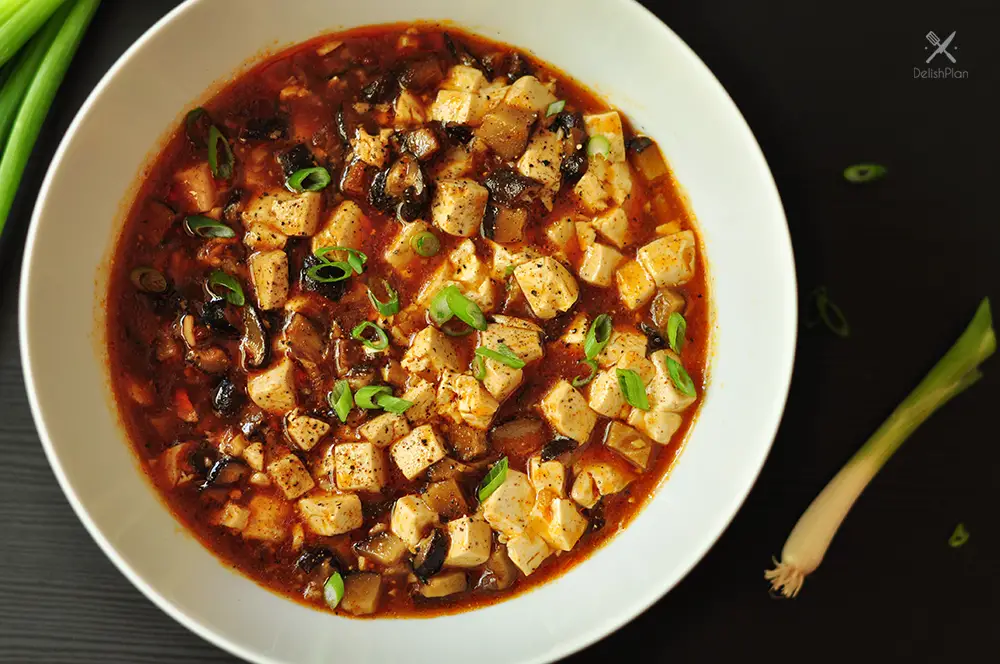
Mom’s Signature Drunken Chicken
Spicy Chinese Noodles
Vegan Mapo Tofu
Gluten-Free Mapo Tofu
Cold Soba Noodles in Hot Chili Oil Sauce
11. CHILI GARLIC SAUCE
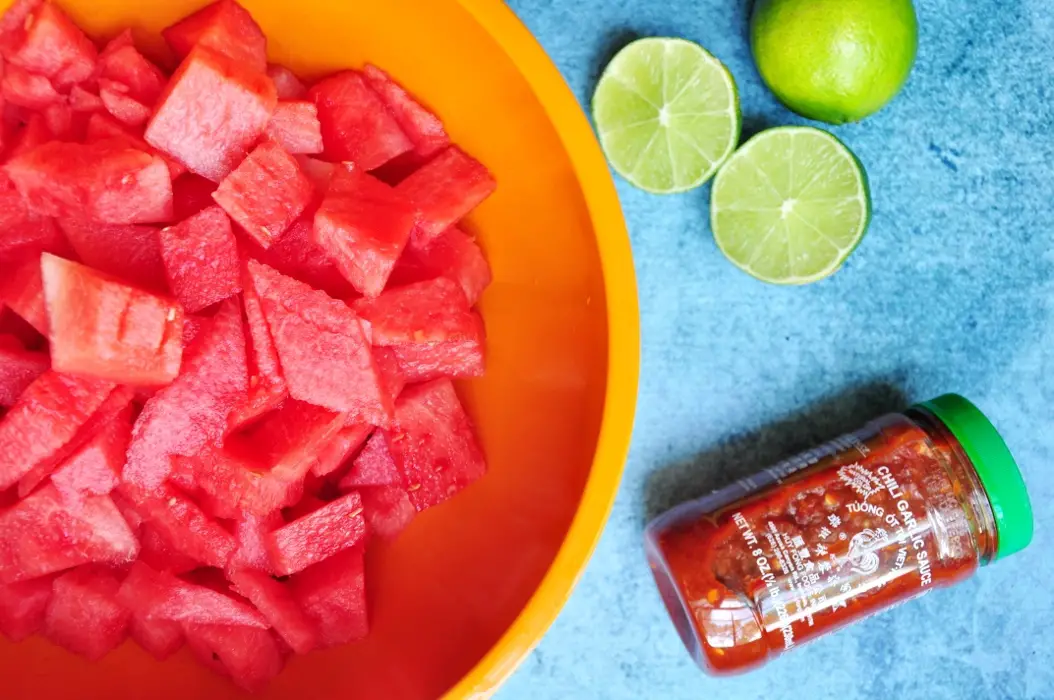
What is it?
This sauce differs from hot chili oil because it’s slightly tangy (rather than pure fire). It’s made with garlic, hot chilis, white vinegar, sugar, and salt. The ultra-simple ingredient list means it’s easy for you to make at home.
You could think of chili garlic sauce as the cousin of sambal oelek, used mostly for Chinese cuisine.
Why cook with it?
Chili garlic sauce adds a touch more of excitement to any dish, with a delicious blend of heat and tang.
How to use it:
If you’re a garlic lover, you could use it in any recipe that calls for regular hot sauce or serve it on the side as a condiment. It also pairs well with meat marinades (meatloaf, meatballs, ground beef for tacos, and chicken marinades), sandwiches, and eggs.
Here’s a recipe for you to try: Marinated Watermelon Salad With Feta Cheese.
12. SRIRACHA

What is it?
Perhaps the most popular and addictive Asian sauce, Sriracha is a spicy hot sauce made with similar ingredients to chili garlic sauce or sambal oelek: chili peppers, garlic, salt, sugar, and vinegar. What distinguishes Sriracha from chili garlic sauce is that it’s much sweeter than its sibling sauces, with sugar being the second ingredient on the list. There’s about 1 gram of sugar in every teaspoon of Sriracha.
Why cook with it?
A touch of sweet and a pinch of heat makes this Asian sauce addictive.
How to use it:
Some examples of Asian recipes that use Sriracha are fried rice and noodle dishes, such as Sriracha soba noodle soup. However, Sriracha has become popular in all types of cuisine. You can find it in recipes for hummus, spicy mayo, drizzled over the top of avocado toast, used in vinaigrettes, added to ketchup, and used to add flavor to plain veggie dishes, such as steamed asparagus or brussels sprouts.
It’s good to note for your recipes that Asian hot sauces like Sriracha are different than American hot sauces, such as Tabasco.
Give these recipes a try:
Sriracha, Tomato, and Honey Shrimp
Pho with Zucchini Noodles
15-Minute Turkey Pho
13. TERIYAKI

What is it?
You can think of teriyaki as the “signature” Asian marinade, a type of barbecue sauce. It’s made from four ingredients: soy sauce, sugar, sake or mirin, and ginger. It’s a dark, thick, sweet-tasting sauce used to enhance the flavor of fish, meat, and vegetables.
Why cook with it?
The flavor factor, of course. Its sweet, umami taste can turn even the blandest dishes into something incredibly tasty.
How to use it:
Soak your vegetables, tofu, chicken, fish, or meat in teriyaki for 30 minutes or so before cooking.
You can also reduce teriyaki sauce to thicken it, so it makes an ideal glaze for meat. Here’s a recipe to try: Salmon Fried Rice with Green Onions.
14. BLACK BEAN SAUCE
What is it?
Some call it the Asian version of ketchup, only instead of tomatoes, this sauce (which is more of a paste) is made with fermented black beans. It is commonly used in Chinese cooking.
If you haven’t tried black bean sauce before, you might be wondering how the heck fermented beans could turn into a delicious condiment. But when combined with soy sauce, rice wine, broth, garlic, fresh ginger, chilies, and other aromatics like cloves and orange rind, the overall result is a salty, savory flavor.
If you’ve eaten at Chinese restaurants, you’ve most likely had black bean sauce in your beef and broccoli stir-fries or Shanghai noodles, or with spring rolls at Vietnamese restaurants.
Why cook with it?
Aside from the joy ride for your taste buds, black bean sauce is a condiment you should have on hand if you want to cook authentic Chinese at home.
How to use it:
- As a stir-fry sauce. Instead of soy sauce, toss your veggies in black bean sauce.
- To coat your roasted veggies, such eggplant or cabbage.
- As a dipping sauce for homemade rice paper wraps or lettuce wraps.
Recommended recipes with black bean sauce:
Shanghai Baby Bok Choy With Black Bean Sauce
Stir-Fried Chicken with Black Bean Sauce
So, there you have it: 14 Asian condiments and sauces that will add serious game (aka flavor) to your cooking. If you’re new to making authentic Asian cuisine, I also suggest stocking your pantry with some sesame seeds, sesame oil, and five-spice powder. Before you know it, ordering Chinese takeout will be a thing of the past, and you’ll be doing it all on your own.
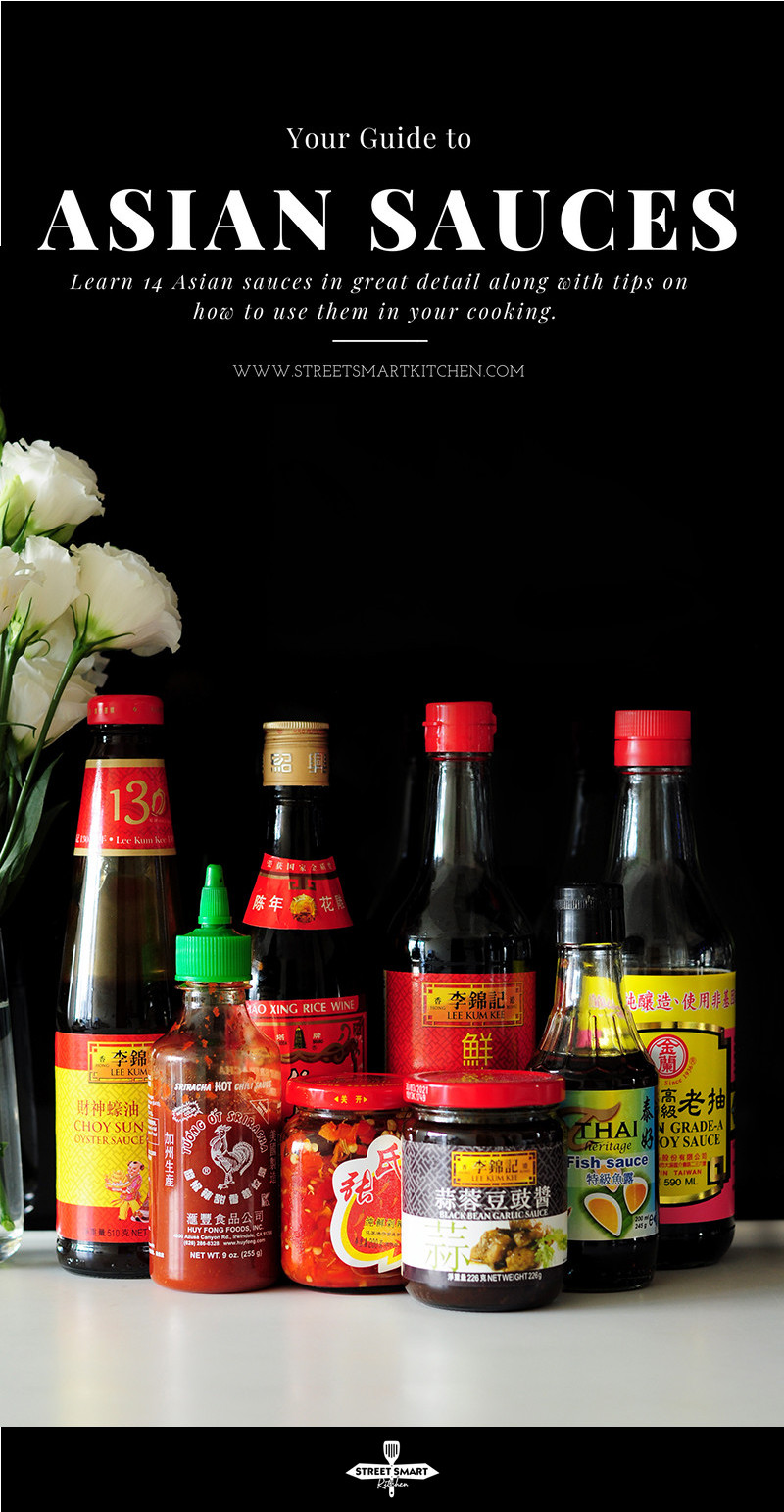
About the Author
Sharon Chen is an Integrative Nutrition Health Coach and author of the Complete Sous Vide Cookbook. She believes food not only brings healing but also connection. As the creator of StreetSmart Kitchen, she aims to make meal prep easier than ever and help you find balance, ease, joy, and simplicity in the kitchen as you improve your well-being.




Pingback: How Long To Cook French Fries In Air Fryer? - Tips And Tricks In The Kitchen
Pingback: Low Waste Meat Scrap Pho - Avidly Ravenous
Pingback: 10 Best Recipes with Vegetable Broth (Perfect for Leftovers) – A&C Accounting And Tax Services – Top Quality Accounting, Bookkeeping, Payroll And Tax Services- Oakland, CA
Pingback: 10 Best Recipes with Vegetable Broth (Perfect for Leftovers)
Pingback: Global Pantry Series: Inside the Thai Pantry - Top Rank Chefs
Excellent, informative article! There are several I haven’t tried at home before, but I definitely will get them in. Correct about the coconut aminos delicious and great use on a variety of dishes….healthy, too! Try the Bragg original aminos, as well! A little different from coconut, but delicious and equally healthy! Again, thanks for impressive article and look forward to trying the recipes!
Keep up the good work! We all need to expand our tastes and enhance our diet, health!
Ohhh…I’ll have to give Bragg original aminos a try. Thanks for the suggestion! Hope you like some of the recipes I included in this article. Cheers!
Pingback: Make Steamed Broccoli the Most Nutritious It Can Be
This was excellently written and very informative. It goes without saying that I enjoyed this article/list immensely.
Thank you!
Thank you for your comment, Dr. Scott Giles. I appreciate it. Glad to hear that you found my article helpful.
There is one thing that I want to correct it! I am a Vietnamese person and I heard about hoisin sauce, and I also tasted it in my trip to the US in a Vietnamese restaurant, but in my perspective, hoisin sauce is just used in Southern cuisine in VN! For Northern, we hardly ever use this type of sauce in cooking! But anyway, Thanks for sharing
Hey Nathan! Thanks so much for stopping by and sharing the detail about hoisin sauce. Love learning things from readers like you. Cheers!
Wow! Only knew few of these sauces. Would love to try them all. -Chuck
Im an Asian lady who doesn’t cook but only loves to eat. These spices are so amazing, i used to haul this and get it as gift to many Aunties back home.
haha… I bet they made great gifts and your Aunties were happy with them. 🙂
Thank you for sharing this list and info. I surprised myself and knew almost all the sauces but three. I don’t use many of them though I’m familiar with them. I shop frequently at an Asian market. I eat lots of Korean food and sometimes try to make it.
I love cooking with Asian flavors and not only did this give me new inspiration on how to incorporate the sauces I already use, but it introduced me to coconut aminos, which I can’t wait to try. Also loved the link to create my own hot chili oil!
Coconut aminos is delicious. I hope you enjoy it. And that homemade hot chili oil is the bomb! You’ll never want to get store-bought ever again after you try to make it. Thanks for stopping by!
I really enjoy eating asian cuisine because it is easy to substitute the meat for vegetables. I’m a vegetarian so the spices in the sauces help me the veggies much more tasty.
Many Asian sauces are great with vegetables. Namely, the black bean sauce. Hope you enjoy!
We have used some of these sauces but not all of them. It was good to learn and read about what each sauce can do and how to use it in cooking.
I am a foodie and I love cooking, being an Asian, sauces complete my cooking life. However, I don’t know much about PONZU SAUCE and have never used it. Would definitely try to find it at the grocery and do some kitchen experiment. Such an interesting post, thank you so much. I bookmarked it!
Thank you for stopping by. I hope you will like ponzu sauce as much as I do.
This is such a great guide to Asian sauces. I love the sound of many of these and it’s great to know how to make them at home and what goes into each sauce.
Love this post! I enjoy making stir fry and fried rice and other asian dishes. This post is a great help! Thank you!